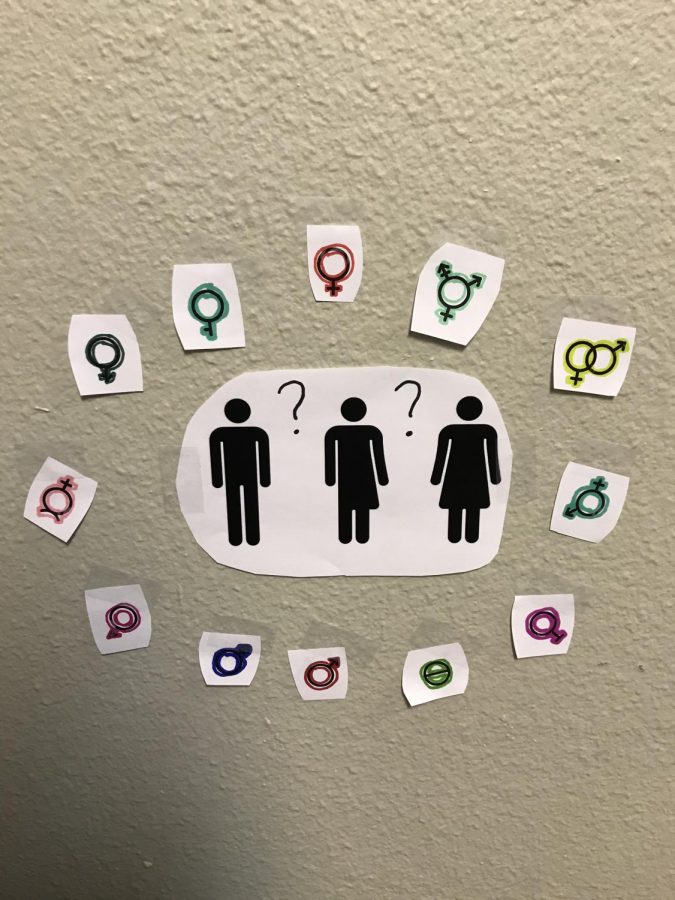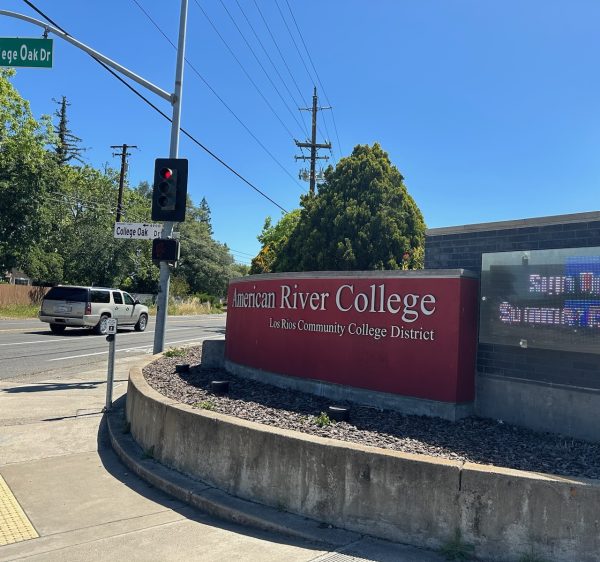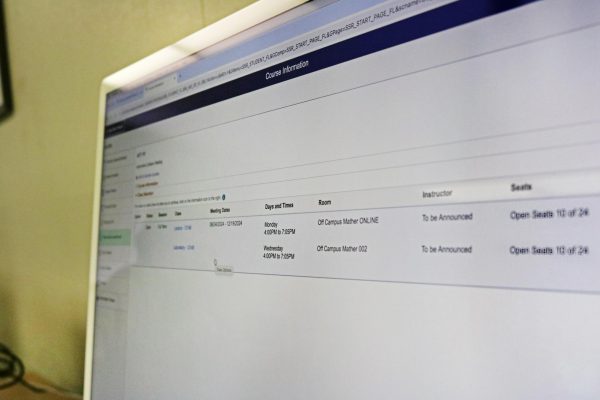ARC provides option to select gender pronouns in learning platforms
Students and employees can now select their pronouns in Canvas, eServices, rosters and Zoom
As of October 2020, all students and employees can now indicate their gender pronouns in eServices. Any changes made reflect in Canvas and on official rosters. (Photo illustration by Ariel Caspar)
Earlier this semester, it was announced district-wide through various mass communication platforms—including the American River College website—that in recognition of the Los Rios Community College District commitment to social justice and a recognition that names and pronouns are an essential part of our identity, as of October 2020, all students and employees can indicate their pronouns,” with instructions on how students and employees can do so on Canvas, eServices, official rosters and Zoom.
According to Scott Crow, ARC public information officer, including pronouns in these systems is a huge step towards building a respectful environment toward individual gender identity and establishing a more affirming and inclusive space for people of all genders.
He wrote in an email to the Current, the new choices available for selection include: he/him/his, she/her/hers, they/them/theirs, name only, or none selected, which is the default for all current and new students.
“People’s pronouns relate to their gender identity. For example, someone who identifies as a woman may use the pronouns ‘she/her,’” Crow wrote. “We do not want to assume people’s gender identity based on gender expression (typically shown through clothing, hairstyle, mannerisms, etc.). We encourage all members of the ARC community to respect those individuals who choose to share their pronoun preferences.”
Emilie Mitchell, faculty coordinator for the ARC Pride Center, was highly instrumental in pushing for name policy changes and now gender pronoun policy changes. The process to enact the change was lengthy, she says. Although she and other campus representatives had proposed these changes seven months ago, she did not hear from the district that there would be any action taken until a few months ago.
In late September, she received an email from the district that announced they would be moving forward with officially adding pronoun options in learning and enrollment systems.
“I serve queer and trans students every single day. And particularly for our nonbinary scholars or transgender scholars, as well as our colleagues who are classified professionals and our faculty members, this is really a basic element of respect for one’s identity,” Mitchell said.
According to Mitchell, Canvas, LRCCD’s learning management system, had the opportunity to include pronouns already embedded into its software. This came to her attention through the campus’ IT staff members and the ARC distance education department.
She was told that in order to use what Canvas has to offer, an administrator has to agree to turn on this function. After learning of this function, it was decided a group of representatives, including Mitchell, would propose to the district that this option be available in every learning or enrollment system where it was possible.
Mitchell put together a presentation that she or an Academic Senate representative would present to the district. After this, the district presented the proposal to Tamara Armstrong, LRCCD’s associate vice chancellor of information technology. This proposal was also presented to the LRCCD Distance Education & Virtual Education Center and a plan was formed to move forward, including parsing it down into systems and identifying which pronouns individuals would want as an option on the default lists.
“It was a lot of education on the back side. Why is this important? Why do we need to address this? And there were some logistical issues, like which systems talk to whom, and then of course at the same time, all of our campus’ moved remotely,” Mitchell said.
According to Mitchell, this change reflects on roll sheets as well, where professors can see the affirmed name and pronoun of the individual. Before these changes were made, the individuals legal name would still be shown with their affirmed name in parentheses, and no pronoun was shown at all.
“[This method is] totally inappropriate. So we worked really quickly on getting that eliminated,” Mitchell said. “Our rosters reflect at that moment in time the names of the students as they live their lives.”
Mitchell said the district is trying to keep these pronoun options as updated and relevant as possible to accommodate all students, so as new things come up, those changes will be made in the system. Once students make a name change, their legal name is no longer visible. Although legal names may appear on legal documentation such as transcripts or financial aid awards, none of the individual’s classmates or even the professor would know that it appears that way.
“To my knowledge …we’re pretty much one of the best in terms of name policy and pronouns. This is not common at all,” Mitchell said.
According to Mitchell, although she has been incredibly vocal in advocating for these students because of her position, the students have played a huge role in advocating for themselves.
“I do want to give due credit to students. It is the case that my job is to advocate for policy and because of my positionality as a faculty member and coordinator, there are avenues of influence and discussions that I can have that the average student does not have access to,” Mitchell said. “But it is 100% the students saying ‘this is preventing me from being successful in school. This is preventing me from going to school. This is making me leave my classes.’”
Mitchell said that frequent Pride Center campus climate studies have revealed that names and pronouns are very important to students’ identities and how they present themselves to the world. The study also showed students find it discouraging when individuals do not use all inclusive language.
“While it may be the case that I took the fight to the avenues I have access to, it is absolutely grassroots activism on the part of students, faculty and staff who have lived experience,” Mitchell said. “It has been the tremendous voice of those in the community who are transgender, gender non-conforming, and others saying ‘this is what I need to be a successful Los Rios employee or student.’”
ARC President Thomas Greene has had a strong focus on social justice, and has always aimed for creating a more welcoming and affirming campus, particularly to historically marginalized communities, according to Mitchell.
“It takes some leadership at the top who says this is really important to us,” Mitchell said. “It takes a tremendous amount of education, and continuing to talk to [people] about the experience of students and how these things are really, in the grand scheme of things, minor changes with huge impacts. It cost us nothing to do this.This was a zero cost intervention with huge implications and ramifications.”
Another area that Mitchell and others in leadership are working towards is inclusive building practices, which means adding all gender restrooms and changing facilities to the campus. Mitchell said there have been several reports through the Pride Center from transgender, nonbinary, gender non-conforming and even cisgender students who feel uncomfortable in locker rooms, particularly the shower areas which have not been updated to accommodate privacy.
Mitchell said she was able to start working with Cheryl Sears, director of facilities, on the “women’s” locker room to create single stall showers and changing facilities. She also said there is an ongoing discussion about taking a multi-stall bathroom and labeling it as an all gender restroom, but this has yet to be determined.
Other gendered restroom facilities would still be available, but those who are not uncomfortable using a multi-stall all gender restroom could choose to use that as an alternative. According to Mitchell, the University of California system is far ahead on providing gender inclusive facilities for its students, and the California Community College system should follow suit.
Single stall all-gender restrooms already exist on campus, but Mitchell is pushing for multi-stall all gender facilities across campus, regardless of cost, especially in the newer buildings that are being built as part of the ARC campus redesign.
“I have a common statement that I say that is ‘budgets are not apolitical.’ Budgets are value statements,” Mitchell said. “They tell you as an organization who we value, who we value more, and who we value less.. Where we put our money is directly related to what we care about.”
Mitchell said this would be a huge step to creating a more equitable campus for students to feel welcomed and affirmed just as they are.
“All of us cannot control everything, but all of us can control something,” Mitchell said. “We have one little sphere of influence, and I think it behoves us to spend some time self-reflecting and saying, ‘what is one action I could do today, this week, this semester that would lead to a more equitable outcome?’”
Mitchell said creating equitable outcomes for all may require looking at disproportionate impact data, and assessing if there are groups falling behind. If that is so, Mitchell says as a faculty member there may be something going on within the classroom or virtual classroom that is contributing to that.
Mitchell adds that being equitable is focusing on the smaller things in interactions with students, such as acknowledging their affirmed name and pronouns, using inclusive language and simply smiling, because that is what makes students feel welcomed and included. Kindness and showing you care goes a long way.
“In every place in which we work and exist, we have some limited sphere of power,” Mitchell said.
Students can learn more about recognizing the importance of pronouns at https://arc.losrios.edu/campus-life/news/recognizing-the-importance-of-pronouns.















